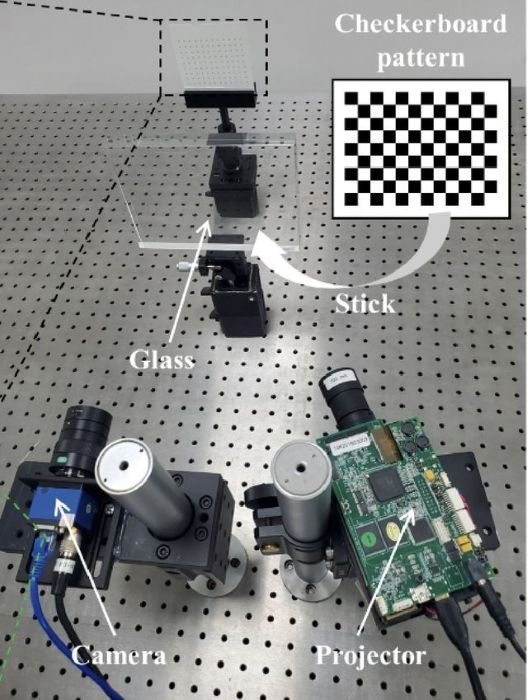In industrial inspection environments, 3D vision systems often must be enclosed in a transparent protective cover to avoid damage. Due to the deflection of light rays on the transparent medium, 3D imaging an object using traditional vision methods based on triangulation produces large measurement errors.
 3D reconstruction method using fringe projection and an SVS-Vistek camera through a planar transparent medium. Image Credit: SVS-Vistek
3D reconstruction method using fringe projection and an SVS-Vistek camera through a planar transparent medium. Image Credit: SVS-Vistek
Besides manufacturing, similar challenges arise when performing 3D reconstruction of organs immersed in formalin liquid, 3D measurement of underwater artifacts, or 3D shape measurement of objects through an observation window in wind tunnels. Many methods have been developed for eliminating the influence of light deflection in these situations, all of which are complex and difficult.
To overcome these issues, researchers at the Tianjin University of Commerce in Tianjin, China, have introduced a 3D reconstruction method harnessing fringe projection, combined with a planar transparent medium for light to pass through with minimal scattering or absorption, therefore enabling clear visibility. The planar transparent material was glass, which had a refractive index of 1.5 and a thickness of 20 mm. Phase information was employed for the point-to-line matching of corresponding points between the projector images and images acquired by a camera. This eliminates the need of geometry constrains to find corresponding points between left and right camera images, thus improving matching efficiency.
In addition, the refractive 3D reconstruction method integrated a Texas Instrument projector with a resolution of 912 × 1140 pixels, and an SVS-Vistek GigE Vision 5MP camera with a resolution of 2448 × 2050 pixels set to record at 10 frames-per-second. A calibration plate with discrete ring markers on its surface was used for system calibration and accuracy evaluation. Interestingly, the relative position of the Mikrotron camera and the glass proved to be arbitrary, as long as the camera was able to observe a measured object through the glass clearly.
To confirm the accuracy of their method, the scientists from Tianjin University of Commerce conducted a series of 3D reconstruction tests, both before and after refraction correction. For these experiments, a four-step phase-shifting algorithm was used for calculating the wrapped phase, and an optimum fringe selection method for calculating absolute phase at each pixel position. The difference between the reconstructed result and the original images was calculated for accuracy evaluation, which proved to extremely small.
In future work, the researchers plan to address how to optimize projection geometry when the glass thickness is not known or when the glass is not flat, with the aim of extending high-accuracy 3D reconstruction for other applications.